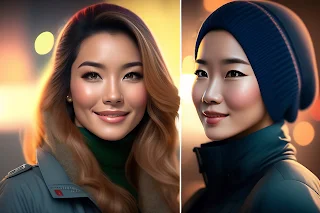Use of unrealistic beauty standards in ads featuring women
Introduction
Advertising has become one of the most powerful mediums for marketers to reach out to their target audience. It is the process of communicating with consumers and promoting products or services through various channels such as television, print media, social media, and other digital platforms. Advertisements featuring women have been the subject of discussion and criticism for many years due to the use of unrealistic beauty standards. This article aims to explore the impact of unrealistic beauty standards used in advertisements featuring women.
Unrealistic Beauty Standards
Beauty standards have been constantly evolving over the years. However, unrealistic beauty standards set by the media have become a major concern in today’s society. The use of unrealistic beauty standards in advertisements featuring women has become a common practice. Women are often portrayed in advertisements as flawless, perfect, and with ideal body types. These images of perfection are not realistic and can be harmful to the self-esteem and mental health of women.
The pressure to conform to these beauty standards can lead to low self-esteem, body dissatisfaction, and eating disorders. The use of airbrushing and photo editing software to enhance and alter the appearance of models in advertisements has become a common practice. This creates an unrealistic image of beauty and can cause women to feel inadequate and unhappy with their bodies.
Impact of Unrealistic Beauty Standards
The use of unrealistic beauty standards in advertisements featuring women can have a significant impact on society. Women and girls who are constantly bombarded with images of perfection may feel that they need to conform to these standards to be considered beautiful or successful. This can lead to a negative body image and low self-esteem, which can have serious consequences for mental health.
Research has shown that exposure to images of thin, idealized models in advertising can lead to an increase in body dissatisfaction, depression, and anxiety in women. A study conducted by the American Psychological Association found that exposure to media images of thin, idealized women leads to increased levels of body dissatisfaction and eating disorders in women and girls.
In addition, unrealistic beauty standards in advertising can also perpetuate harmful stereotypes and reinforce gender roles. Women are often portrayed in advertisements as being passive, submissive, and solely focused on their appearance. This reinforces the idea that women’s worth is based solely on their physical appearance and perpetuates the objectification of women.
The Impact on Young Girls
The impact of unrealistic beauty standards in advertising is especially significant for young girls. Young girls are highly susceptible to the messages conveyed by advertising and are often exposed to these messages from a very young age. Exposure to unrealistic beauty standards can lead to low self-esteem, negative body image, and the development of eating disorders.
According to a study conducted by the Girl Scouts Research Institute, 80% of 10-year-old girls have been on a diet, and 40% of 9 and 10-year-old girls have tried to lose weight. This is an alarming statistic and highlights the need for greater awareness about the impact of unrealistic beauty standards on young girls.
What Can Be Done?
Advertisers need to take responsibility for the impact of their advertisements on society. Advertisers can make a significant impact by creating advertisements that are more diverse and inclusive. Advertisements that feature a diverse range of models with different body types, skin colors, and ages can help to break down stereotypes and promote a more positive body image.
In addition, advertisers can also avoid using airbrushing and photo editing software to create unrealistic images of beauty. Instead, advertisers can use real women with imperfections to create a more realistic image of beauty. This can help to promote a more positive body image and self-esteem in women.
Conclusion
Unrealistic beauty standards in advertisements featuring women have become a major concern in today’s society. These standards can have a significant impact on the self-esteem, body image, and mental health of women and girls.

